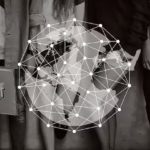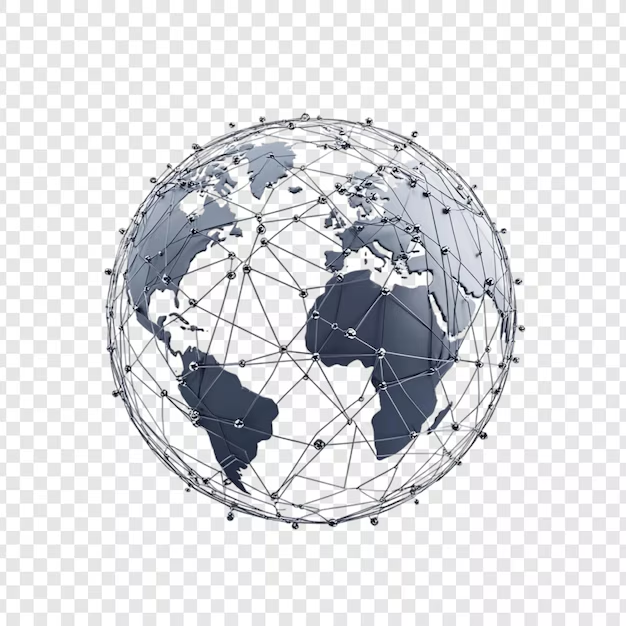If you think building a website for your nonprofit organization (NGO) is expensive, time-consuming, and requires a team of developers — we have good news. You can launch a functional and well-structured website in just five days, even if you have no technical background.
A website is more than just an online presence. It’s a tool that helps your organization communicate its mission, attract new supporters, ensure transparency, and increase donations. And the best part? You don’t need to be a web expert to create it.
In this guide, we’ll show you how to plan, build, and launch a simple yet effective website for your NGO in only five days.
Day 1: Define Your Goals and Website Structure
The first and most important step is to clearly define the purpose of your website. Without this, it’s easy to get lost in endless design tweaks and unnecessary pages. Take time to ask yourself:
- Why do we need a website?
- What actions should visitors take when they visit our site?
- How can our website support our mission and projects?
Your answers will guide every next decision — from the design you choose to the content you publish.
Common Goals for NGO Websites:
- Share your mission and story with the world.
People support people, not faceless organizations. Your website should clearly tell who you are, what you believe in, and why your work matters. This is where trust begins. - Present your ongoing and completed projects.
Let visitors see how you make an impact. Highlight success stories, show real results, and keep them updated with fresh news. This not only builds credibility but also inspires new supporters to join your cause. - Encourage donations and support.
If you want people to help, make it easy and obvious. A donation button should be visible, and information about how their money will be used must be clear and transparent. - Build trust through transparency by publishing reports.
One of the biggest concerns donors have is, “Where does my money go?” Regularly publishing financial and activity reports directly on your website helps address this and makes your organization more credible. - Create opportunities for volunteer involvement.
Not everyone can donate, but many people are willing to offer their time and skills. Add a clear section explaining how to become a volunteer and what roles you currently need help with. - Provide clear contact options for communication.
Don’t hide behind a contact form only. Offer multiple ways to reach you — a phone number, email, social media links, or even a direct messaging button. Show that your organization is open and easy to connect with.
Essential Pages to Include:
- About Us — Your Story Matters
This is where you create an emotional connection. Tell the story of how your organization was founded, what drives your mission, and introduce the real people behind it. Authenticity is your superpower here — share challenges, milestones, and future plans. - Projects/Initiatives — Showcase Your Impact
People love to see real outcomes. Create dedicated pages or sections for each major project, including photos, updates, and stories from those you’ve helped. Don’t just state facts — show transformation. - Reports and Transparency — Build Confidence
Transparency turns visitors into long-term supporters. Upload annual reports, financial statements, and project outcomes. Use simple language and infographics to make even complex data easy to understand. - How to Help — Make Supporting You Easy
Clearly explain how people can get involved — through donations, volunteering, or partnerships. Add easy-to-click buttons for donations and forms for volunteer sign-up. If you have recurring giving options, highlight those too. - Contacts — Stay Accessible
Dedicate a simple, well-structured page to contact information. Add a short message encouraging people to reach out. Include a form for inquiries but also list direct contact details — email, phone number, social media links.
Pro Tip: Start simple. Even if your website looks basic at first, it’s much better than having none. Focus on clear communication and easy navigation — this already puts you ahead of many organizations!
Day 2: Choose the Right Platform for Your Website
Now that you know what your website should do, it’s time to choose how to build it. And here’s the good news — you don’t need to write a single line of code!
There are many platforms designed to help people with zero technical background create beautiful, functional websites.
How to Choose the Best Platform for Your NGO:
- WordPress (Best for Flexibility and Growth)
If you’re thinking long-term and want a platform you can expand later, WordPress is a great choice. With thousands of free templates and plugins (including donation forms!), it’s perfect for NGOs. However, it requires a bit more time to set up and manage. - Wix (Perfect for Quick and Simple Sites)
Want to launch your site fast and without stress? Wix is a beginner-friendly platform with drag-and-drop editing. It’s great for small NGOs that don’t need complex functionality. Plus, it looks really professional even with free templates. - Squarespace (For Visually Stunning Sites)
If you want your website to stand out with beautiful visuals and compelling storytelling — Squarespace is a great option. It’s especially good for showcasing projects, portfolios, and photo-driven content thanks to its stylish templates and intuitive design tools. The downside? Some advanced features might require a paid plan. - Webflow (For Creative Freedom and Advanced Customization)
If you’re ready for a bit more of a learning curve and want greater creative control, Webflow is a powerful tool. It allows you to create highly customized websites without writing code, but it may take a little longer to master compared to beginner-friendly platforms.
Pro Tip: Don’t waste time trying to pick the “perfect” tool. All of these platforms are good enough to start. Focus on content and clarity — that’s what visitors really care about.
Day 3: Prepare Your Content and Visuals
A website without content is just an empty shell. Today, you’ll fill it with life — words, photos, and videos that tell your story and inspire action.
What Content to Prepare First:
- Simple, Honest Texts
Speak from the heart. People don’t expect perfect writing; they want to understand your mission, feel your passion, and trust your intentions. Write as if you’re talking to a friend. - Clear Headlines and Call-to-Actions
Each page should have a clear focus. Use simple headlines like “How You Can Help” or “Our Latest Projects.” And don’t forget to tell people what to do next — donate, volunteer, contact you. - Photos that Show Real People and Real Impact
Stock photos feel fake. Even simple pictures of your team, events, or the people you’ve helped will create a stronger emotional connection. Authenticity beats perfection. - Short Videos if You Have Them
A quick video message from your founder or a project summary can do wonders. People love to see who’s behind the mission! - A Simple Content Checklist:
- About Us: Your story and mission.
- Projects: Highlight 2-3 main initiatives.
- How to Help: Clear ways to contribute.
- Reports: Upload at least one recent report or activity summary.
- Contact Information: Make sure it’s easy to find.
Pro Tip: Don’t aim for “perfect.” You can always add and improve content later. Launching is more important than polishing every sentence!
Day 4: Build Your Website — Time to Bring It All Together
You’ve got your plan, your content is ready — now it’s time for the most exciting part: building your website! And don’t worry, this is much easier than it sounds. Modern website builders let you create fully functional websites with just a few clicks.
Follow These Simple Steps:
- Pick a Template That Matches Your Mission
Most platforms (Wix, Squarespace, WordPress) offer ready-made templates for nonprofits, charities, or small businesses. Start with a design that already feels close to your goals — you can always customize colors, fonts, and layouts later. - Keep Navigation Simple
Visitors should be able to find everything they need in no more than 2-3 clicks. Add a clear menu at the top with links to your About Us, Projects, How to Help, Reports, and Contacts pages. Less is more. - Use Visual Blocks for Clarity
Break content into easy-to-read sections using blocks or cards. Large walls of text scare people away. Instead, use headings, short paragraphs, and clear call-to-action buttons like “Donate Now”, “Join as a Volunteer”, or “Read More”. - Test User Experience Yourself
Click through the site as if you’re a first-time visitor. Is it clear what your organization does? Is it easy to find donation or contact options? If something feels confusing to you, simplify it. - Check Mobile Responsiveness
More than half of web traffic comes from mobile devices. Your site must look great on smartphones and tablets. Most platforms have built-in tools to preview how your site appears on different devices — use them!
Pro Tip: It’s okay if the site isn’t perfect on day one. The most important thing is that it’s functional and communicates your mission clearly. You can always improve visuals and add new features later.
Day 5: Publish Your Website and Set Up Basic Analytics
It’s the final day — time to go live! Don’t worry if the website isn’t “perfect” yet. Websites are meant to evolve. What’s important is that your audience can already find the key information, learn about your mission, and contact you.
Final Checks Before Publishing:
- Test All Buttons and Links
Click through every page. Make sure donation buttons work, contact forms send messages, and all links open correctly. If something feels confusing to you, it will definitely confuse visitors. - Check the Mobile Version
Over 50% of people will visit your website from their phones. Open the site on your device and check if the text is readable and the buttons are easy to click. - Connect Google Analytics
Even if you’re not a data expert, it’s important to track how people find and use your site. Google Analytics is free and helps you understand what’s working and where to improve. This will also be useful when applying for grants or reporting to donors. - Announce Your Launch!
Share the news across your social media platforms, in emails, and with your partners. Invite people to visit and share feedback. Your website is live — celebrate this achievement!
Pro Tip: Don’t be afraid of feedback. Every comment helps you improve and better understand your audience’s needs.
You’re Online and That’s What Matters Most
Building a website for your NGO in five days might have seemed impossible, but look at you — it’s done! Remember, your website doesn’t have to be perfect; it just needs to exist and communicate your mission clearly.
With this first version, you’re already opening new opportunities for donations, partnerships, and building trust with your community.
Take a moment to be proud of what you’ve achieved. And when you’re ready — keep improving, adding new stories, and sharing your impact with the world.
Your story deserves to be heard. And now, it finally has a place to live online.








